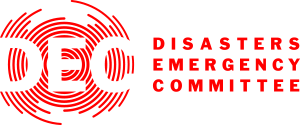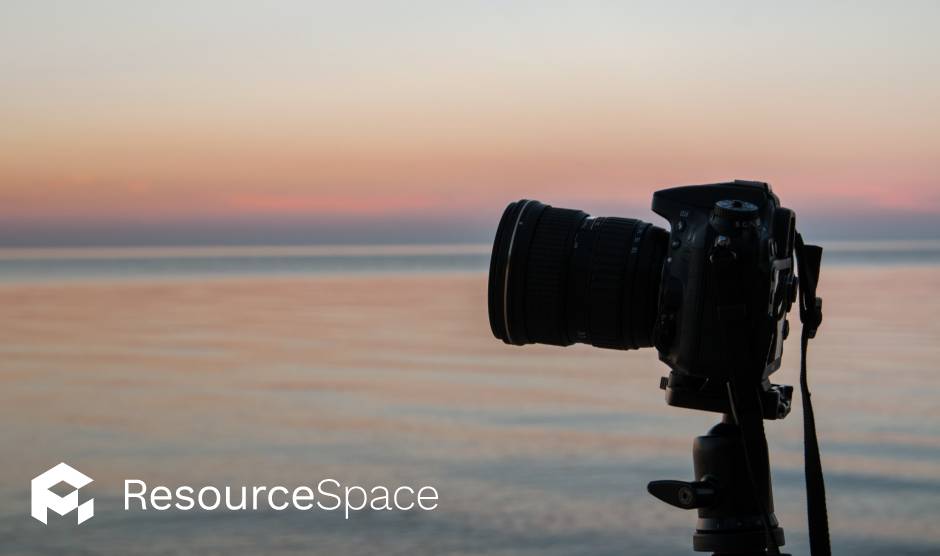
ResourceSpace has changed the way the DEC uses content, making it much easier for us to quickly make assets available both internally and externally during our emergency appeals.
Blog
23rd May 2022

Have you ever searched for the perfect image only to be frustrated by watermarks? Perhaps you've been unlucky enough to be stung with a copyright notice after using something you didn't have permission to use.
Images make a big difference to user engagement, so it's vital that you use them in your digital content, but how do you avoid copyright infringement with images?
Using a copyrighted image without permission, whether copying, sharing, displaying or editing, is considered infringement. In most countries, copyright protection applies automatically from the moment an image is created.
Common examples include:
These situations may seem harmless, but they’re all legally considered copyright violations, even if no money changes hands.
Copyright law exists to protect people’s creative work and prevent others from using it without permission. While the core concept is universal, the legal details vary by country.
In the UK, copyright protection is automatic. There’s no registration process or fee, ownership belongs to the photographer or creator by default. In contrast, the US requires creators to register a work with the United States Copyright Office before they can bring an infringement claim to court.
Some creators choose to make their work freely available or licence it for reuse. Others retain full control and may require a fee or written permission for any form of reproduction.
Unless you're looking at images on a website like Shutterstock or Getty Images that make it clear when an image isn't freely available, it can be tricky to determine whether or not an image is copyrighted or not.
Here are five ways you can check.
If you're considering taking an image from another website, look for a caption that might include an image credit, link or contact email address. If there is one, reach out to the owner and ask for permission to use the image.
If there's a faint watermark across the image, that means it's copyrighted.
Usually watermarks will be repeated multiple times across the image so are hard to miss (and make them unsuitable for use anyway), but look carefully in case it's not been made obvious.
Metadata refers to the digital information that's stored within the image file. This metadata will often store info related to the image's copyright.
To view a file's metadata in Windows, first right-click on the image and select 'Properties', and then click on the 'Details' tab.
To view the metadata in macOS click on 'Tools' when viewing the image in Preview, then 'Show Inspector', and then the 'i' icon. Finally, click on the 'EXIF' tab.
If you're not sure where an image came from, try running a reverse image search on Google. You can either enter the image's URL or upload a file saved to your local machine.
You'll find everwhere that image is located on the internet, and hopefully get to the bottom of who owns it and whether it's free to use.
Using copyrighted images can lead to awkward conversations with creators and ultimately lead to legal action, so our advice is, if you're not sure if you have permission from the copyright holder, don't use it and find another one.
We don't recommend grabbing random images from the web (more on where you can get license-free images shortly…), particularly Google Image search, but if you do, exercise a lot of caution.
Companies like Getty Images use software to identify when an image has been used online without permission, which leads people to think they can sufficiently edit an asset to avoid being detected, or cover themselves legally.
While it might be possible to edit an image enough to avoid it being detected, for example using software like Adobe Photoshop or InDesign, we would advise against it, and it does not get you off the hook from a legal perspective.
If you edit an image that you didn't create, copyright law still applies. The only way to avoid copyright infringement with images is to create unique works, purchase a license to use an image or find a free-to-use image.
READ MORE: Top 5 free picture editors
Using images without the proper rights can have serious consequences, even if it was unintentional.
In many cases, the copyright holder will send a cease and desist letter, asking you to remove the image immediately. You might also be asked to pay compensation, such as licensing fees or damages for unauthorised use.
If the infringement is considered serious, or if the image has been used commercially, the rights holder may decide to take legal action. In rare cases, especially where there's clear intent or large-scale misuse, criminal prosecution is also a possibility.
Just because an image appears freely available online doesn't mean it's free to use. If you're ever in doubt, it's always best to check the licence or ask for permission.
Fortunately, there are a number of websites that offer access to free images that have no license restrictions. Here are three of the best.
One of our go-to stock image websites for free-to-use imagery is Unsplash. Their tagline is 'reinventing the stock photo', and state that they only accept 'the finest quality images'.
Conduct a keyword-based search or browse by category and you'll discover a huge selection of free stock images, as well as premium images available via iStock (with 20% off).
Created by Shopify and intended for entrepreneurs, Burst offers another great collection of free, high-resolution stock images.
Browse by collections, including 'Animals', 'Nature' and 'City', or via their 'Business Ideas' section. There are 26 business idea categories in total, and while niche, will provide perfect stock images if your small business idea is covered.
Boasting over 2.5 million free images, Pixabay offers visual content from a wide range of categories - including photos, vector graphics and illustrations - but they also provide royalty free sound effects too.
You can browse their free sound database by length or audio as well as eight categories, including nature, city, technology and even horror.
To stay on the right side of copyright law, keep the following tips in mind:
These steps can help you avoid accidental misuse and ensure your image sourcing is compliant and ethical.
Although free images don't require any copyright management, it's likely that your organisation is using images with usage restrictions to some degree. However, managing this copyright can be tricky, especially if your digital asset library extends to hundreds - or even thousands - of images.
A Digital Asset Management (DAM) system, such as ResourceSpace, makes this process simple.
Our License Manager allows you to quickly and easily create specific licenses, and associate them with one or more resources. This can be managed on an individual asset level, or for multiple resources at once.
The benefit of using a DAM like ResourceSpace for license management is that it keeps everything all in one place, so there's no need to search through multiple folders for the related files.
Want to find out more about how ResourceSpace solves the copyright management process and helps you to avoid copyright infringement with images? Click here.
Launch your free DAM system now >> No credit card required
Yes, even on social media. Unless the licence says otherwise, the photographer owns the rights.
No. Editing does not remove copyright.
Assume it is. Check metadata, licence terms, or contact the creator.
#CopyrightInfringement
#DigitalContent
#CopyrightLaw
#Watermarks
#Metadata
#ImageBanks
#LegalCompliance
#BestPractice
#IndustryNews